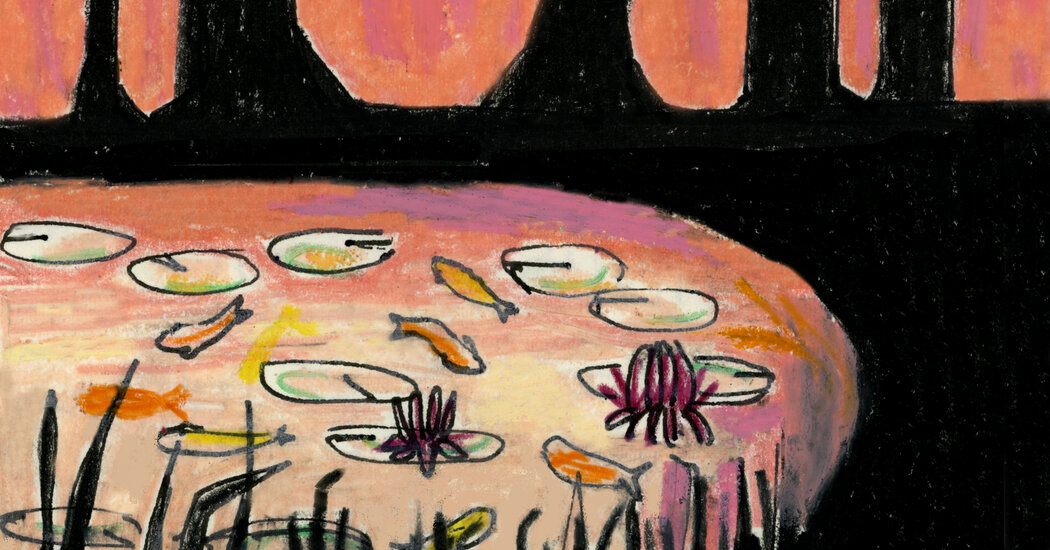You can hear a reading of this poem at the bottom of the page.
“The Pond at Dusk”: It’s a title that presents an image of calm, touched with the faintest shimmer of dread. You might picture a peaceful summer evening in the countryside somewhere, but you might also feel the tug of a somber metaphor in the word “dusk.” Night is falling, and this poem proceeds, nimbly and observantly, toward an unsentimental confrontation with death.
In one called “Twilight: After Haying” — there’s that dusk again — she writes that “the soul / must part from the body: / what else could it do?” What else indeed. This fatalism provides its own kind of solace. “The day comes at last.” The end is inevitable, inarguable, and there may be a balm in acknowledging that fact.
Not that “The Pond at Dusk” quite dispenses such consolation. It isn’t Kenyon’s style to offer homilies or lessons. Instead, she watches, with sympathetic detachment, standing back from the implications of her words and letting them ripple outward, toward the reader.
This is not the kind of nature poetry that gazes in wonder at the glories of creation, taking the world as a mirror of the poet’s ego. Kenyon parcels out her attention carefully, removing herself from the picture as rigorously as a landscape painter at her easel.
Listen to A.O. Scott read the poem.
THE POND AT DUSK by Jane Kenyon
The Pond at Dusk
A fly wounds the water but the wound
soon heals. Swallows tilt and twitter
overhead, dropping now and then toward
the outward–radiating evidence of food.
The green haze on the trees changes
into leaves, and what looks like smoke
floating over the neighbor’s barn
is only apple blossoms.
But sometimes what looks like disaster
is disaster: the day comes at last,
and the men struggle with the casket
just clearing the pews.
